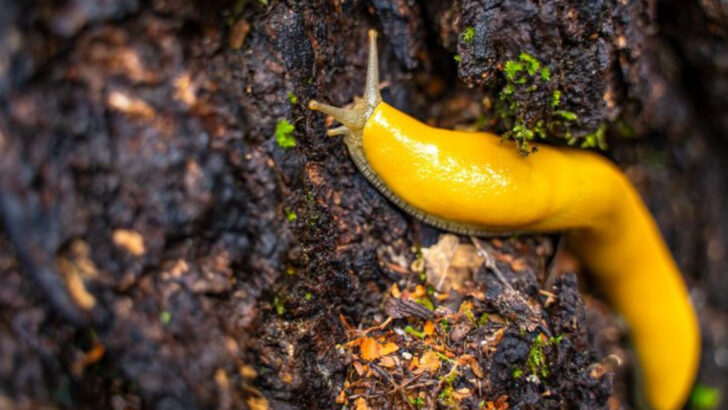They leave slime trails like ghost stories scrawled across the forest floor.
Banana slugs aren’t just strange—they’re downright otherworldly. Bright yellow, surprisingly huge, and slow as spilled syrup, these woodland crawlies seem like they wandered in from a cartoon. But don’t let the goofy name fool you.
These squishy giants are busy playing cleanup crew, soil engineer, and forest therapist all at once. Without a shred of drama (but plenty of mucus), they recycle dead plants, spread seeds, and even help other creatures stay healthy.
You’ll never look at a damp, mossy trail the same way again. Welcome to the weird, wild, and slightly slimy life of the banana slug.
Slime Production

The banana slug’s slime is a marvel of nature. This gooey substance, beyond being a lubricant, serves several crucial functions.
It protects the slug from dehydration by maintaining moisture levels. In addition, the slime acts as a deterrent against predators, as it’s distasteful and sticky, making it difficult for potential threats to eat the slug. Interestingly, the slime also aids in locomotion, allowing the slug to glide smoothly over surfaces.
Did you know? The slime even helps slugs adhere to vertical surfaces with ease. Truly, a multifaceted marvel!
Giant of the Slug World
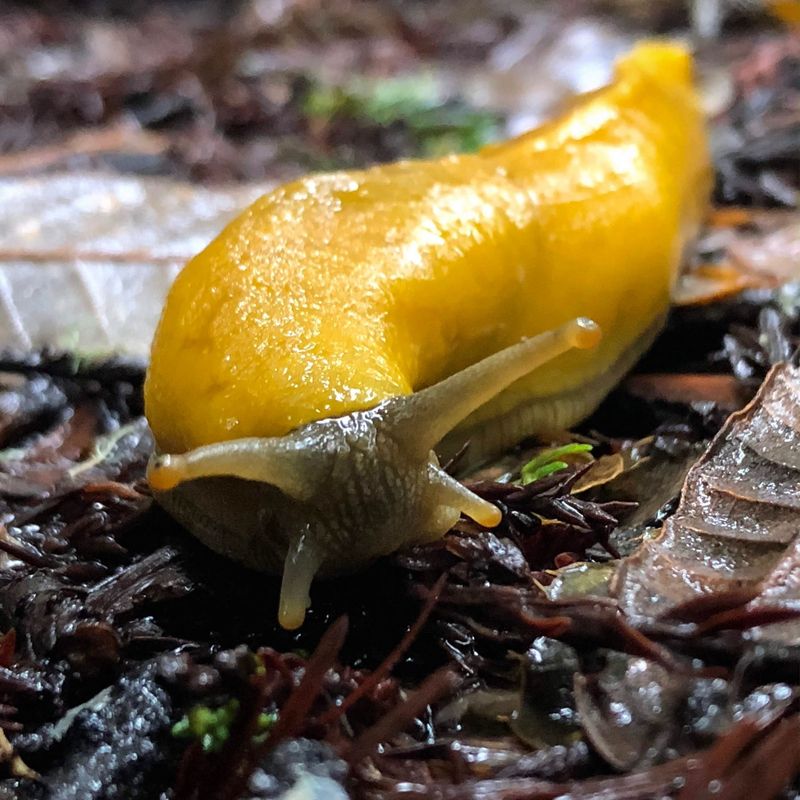
Banana slugs are amongst the largest land slugs in the world, and spotting one can be akin to seeing a small banana on the forest floor.
Their length can reach up to 9 inches, making them giants in the slug world. This size isn’t just for show; it plays a significant role in their survival. Bigger bodies mean they can store more moisture, an essential trait for survival in varying conditions.
No wonder banana slugs are often the centerpiece of slug-related curiosity! Their size truly sets them apart in the mollusk community.
Color Variability
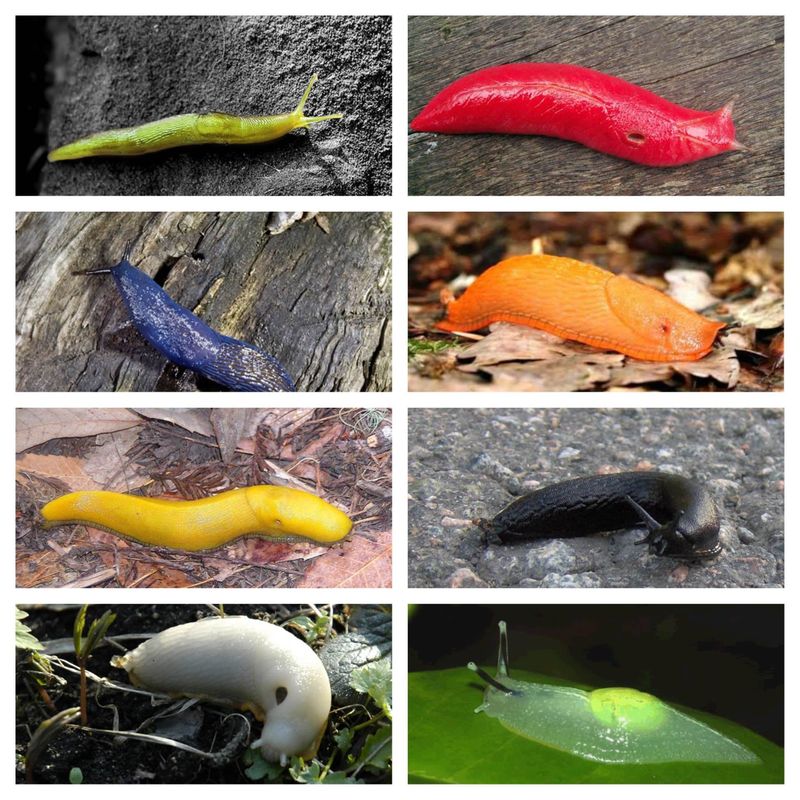
Banana slugs come in a palette of colors, from bright yellow to greenish-brown, allowing them to blend seamlessly with their environment.
This color variability is more than just for camouflage; it also reflects their diet and habitat conditions. The vibrant yellows often indicate a diet rich in algae or certain fungi. Meanwhile, those with earthier tones might be blending into the forest floor’s leaf litter.
Their diverse colors not only intrigue nature lovers but also play a crucial role in their survival strategy, highlighting their adaptability.
Role as Decomposers
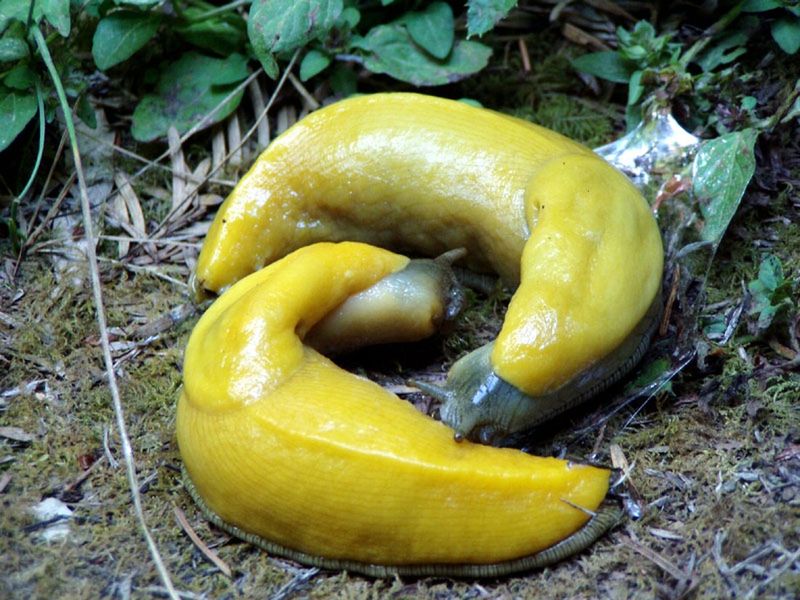
In the world of decomposition, banana slugs are unsung heroes. Their diet predominantly consists of decaying plant matter and fungi, making them essential in nutrient recycling.
As they munch through the forest floor’s detritus, they break down complex organic materials, enriching the soil. This process not only fosters plant growth but also helps maintain the balance within the ecosystem.
Their role as decomposers highlights their integral part in the food web. Without them, forest ecosystems would lack a key player in nutrient cycling. Remarkable recyclers, indeed!
Unique Mating Rituals
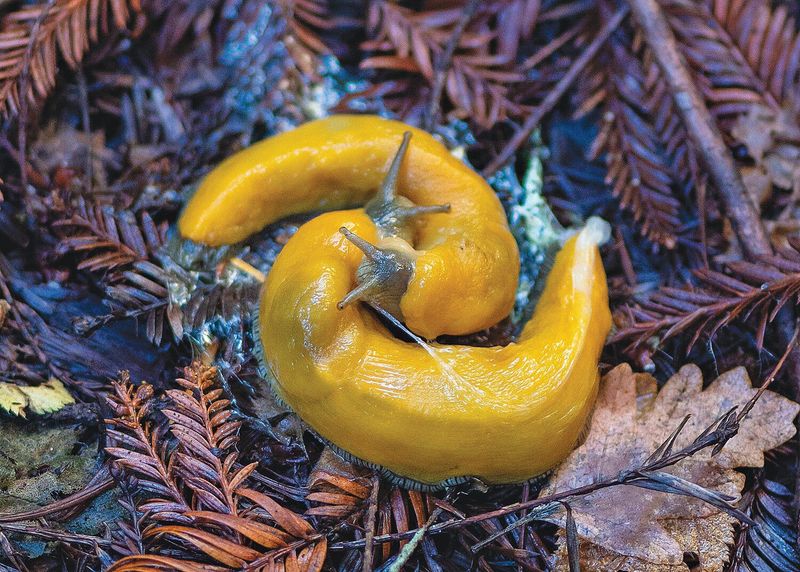
The mating rituals of banana slugs are as intriguing as they are complex. Being hermaphrodites, each slug has both male and female reproductive organs.
During mating, banana slugs engage in a delicate dance, swapping sperm with their partner. This exchange can last for hours, highlighting their methodical approach to reproduction. Sometimes, post-mating, one slug may chew off the other’s reproductive organ in a process called apophallation.
This seemingly bizarre act is thought to prevent subsequent mating, ensuring genetic diversity. Such fascinating reproductive strategies ensure their continued survival.
Habitat Preferences

Banana slugs thrive in moist, temperate forests, predominantly found along the Pacific Coast of North America. These environments provide the perfect balance of humidity and shelter, essential for their survival.
The dense canopy overhead protects them from the sun, while the forest floor supplies ample food sources. Their preference for such habitats underscores their ecological importance in these regions.
By thriving in these environments, they play a pivotal role in nutrient cycling and soil aeration, maintaining the health of their ecosystems. Their habitat choices are a testament to their environmental adaptability.
Slow-Moving Yet Efficient

Despite their slow pace, banana slugs are highly efficient creatures. Their deliberate movements allow them to conserve energy, essential for survival in resource-scarce environments.
This slow-moving lifestyle is complemented by their ability to consume a wide range of organic materials, efficiently recycling nutrients back into the ecosystem. Their leisurely pace also aids in avoiding predators, as their slime can be quite off-putting.
In a world where speed often equates to survival, banana slugs prove that efficiency and adaptability can be just as effective.
Sensory Tentacles
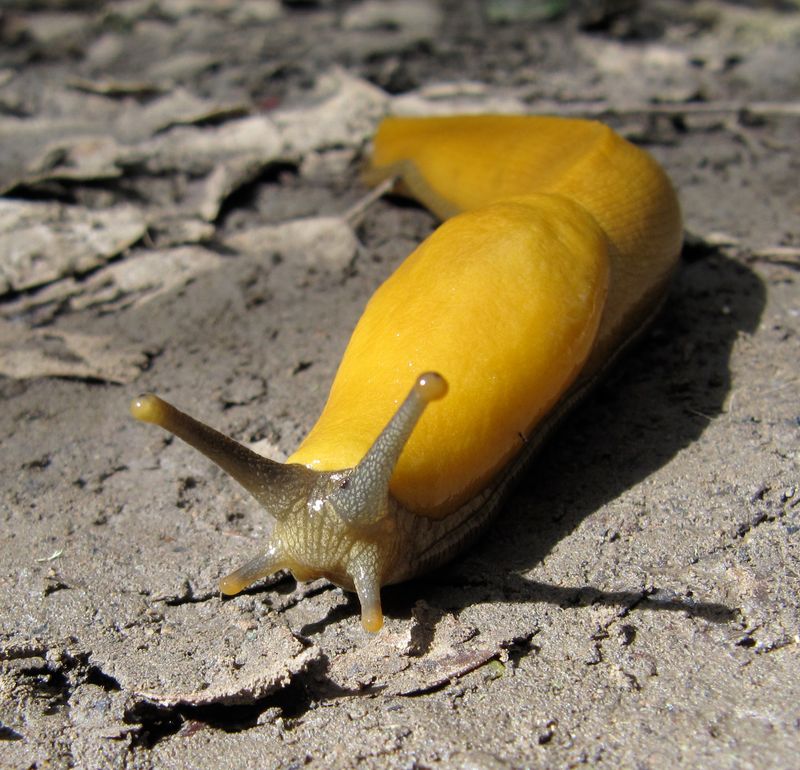
The tentacles of banana slugs are extraordinary sensory tools. The upper pair, known as optic tentacles, are used for detecting light and movement.
Meanwhile, the lower pair, called sensory tentacles, assist in smelling and tasting their surroundings. These tentacles are key to their survival, helping them navigate their environment and locate food. Remarkably, if a tentacle is damaged, it can regenerate, showcasing their resilience.
This sensory equipment makes banana slugs adept explorers of their habitat, highlighting their evolutionary ingenuity. Their tentacles are nothing short of nature’s miracle!
Predator Evasion Techniques
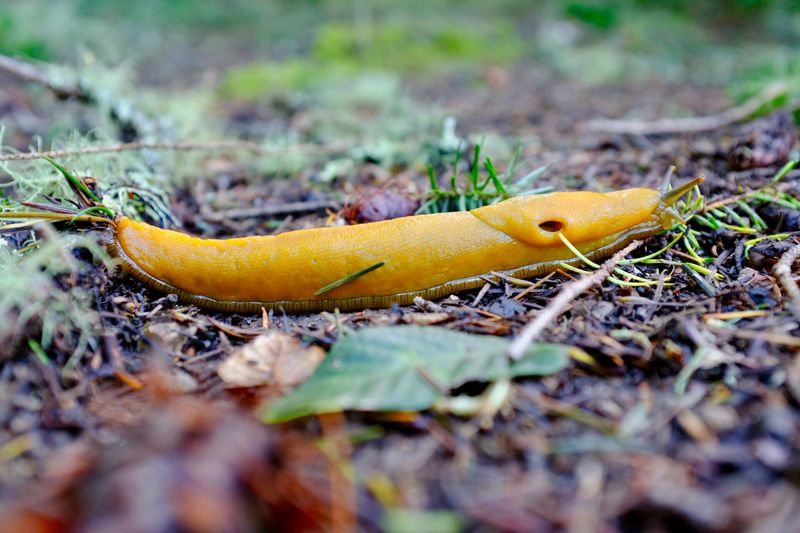
Escaping predators is a vital skill, and banana slugs have mastered the art through camouflage and deterrence.
Their varied coloration helps them blend into their surroundings, making them less noticeable to predators. Furthermore, their slime not only acts as a physical barrier but also contains toxins that can deter potential threats.
Some predators may even learn to avoid banana slugs altogether due to their unpalatable nature. These evasion techniques make banana slugs formidable survivors in the wild, ensuring their continued presence in their habitats.
Importance in Forest Ecosystems

Banana slugs play an indispensable role in maintaining forest ecosystems’ health. By consuming decaying plant matter, they aid in nutrient recycling, promoting plant growth.
Their presence also supports a diverse array of species that rely on them as a food source. Beyond this, their slime trails create microhabitats for smaller organisms, showcasing their multifunctional role. The ecological balance in these forests would be incomplete without the humble banana slug.
Their contributions, although often overlooked, are vital for sustaining the rich biodiversity of these environments.

